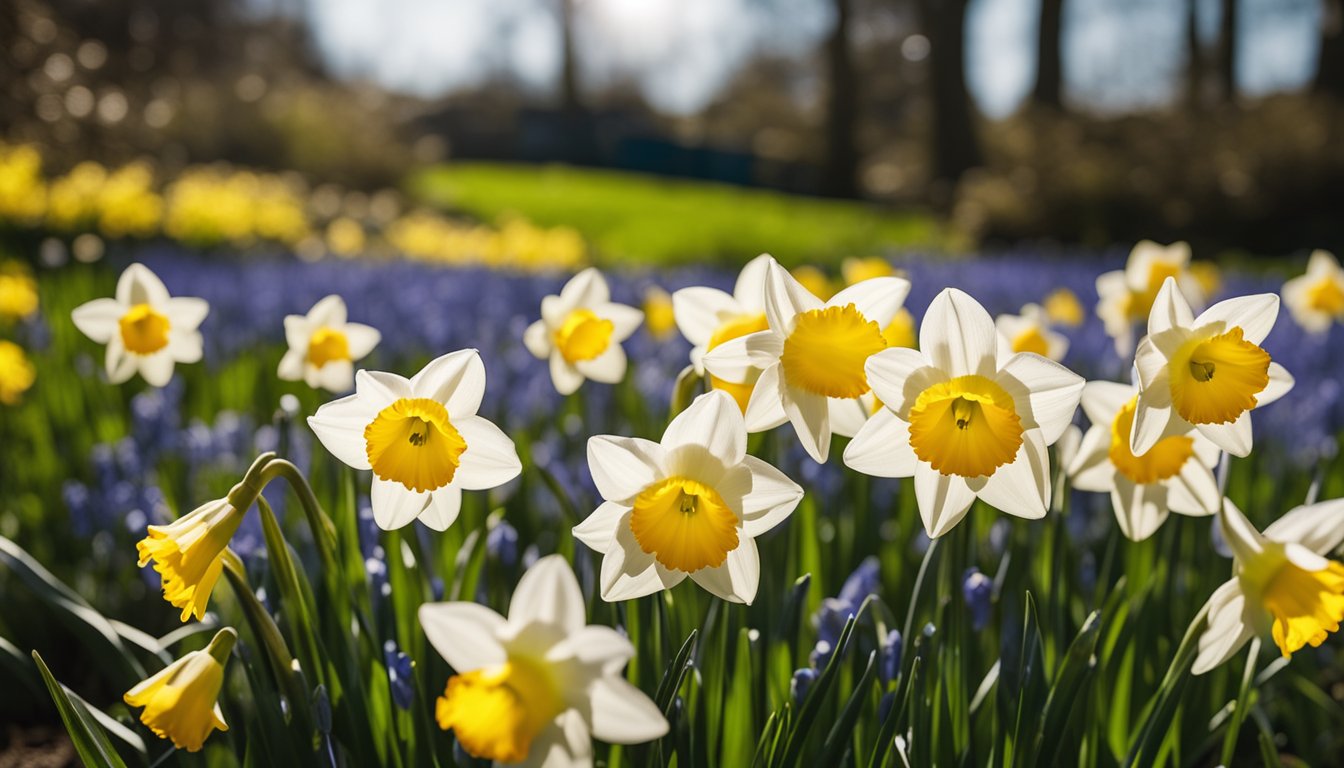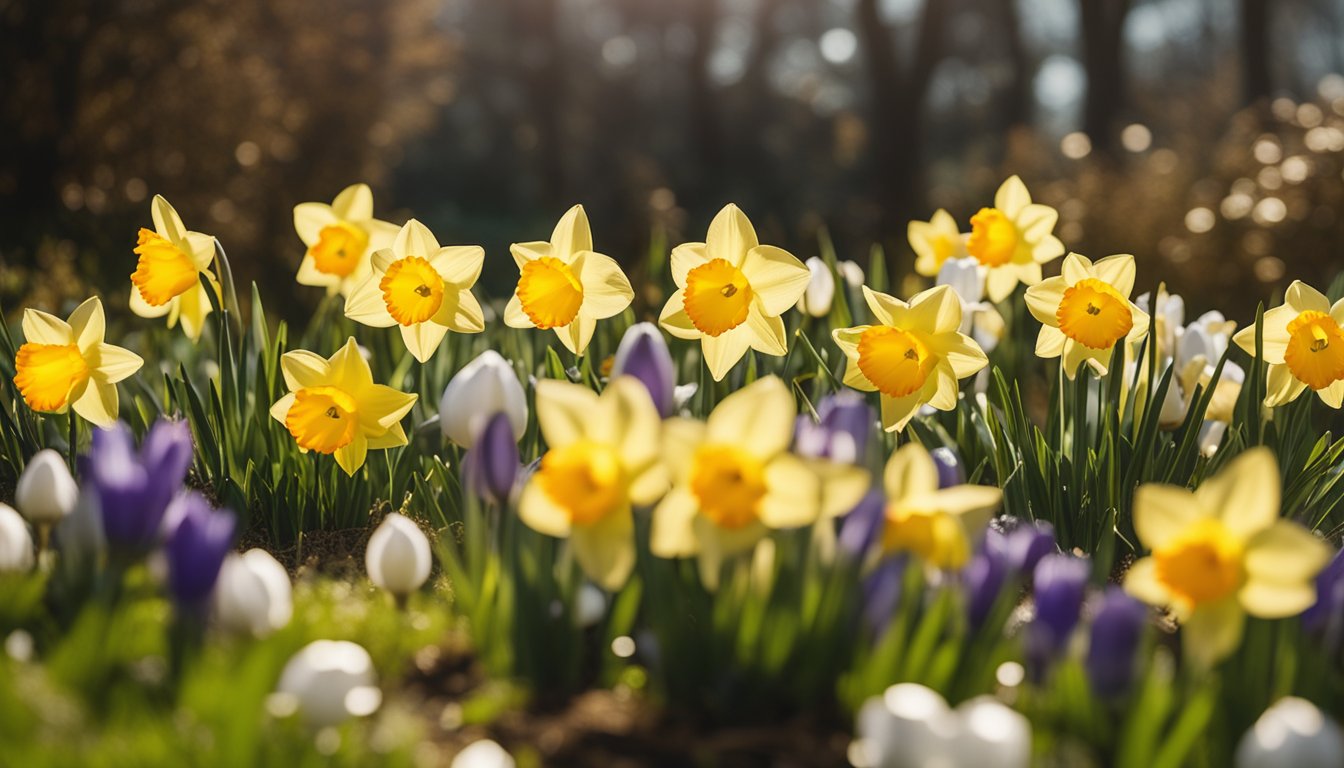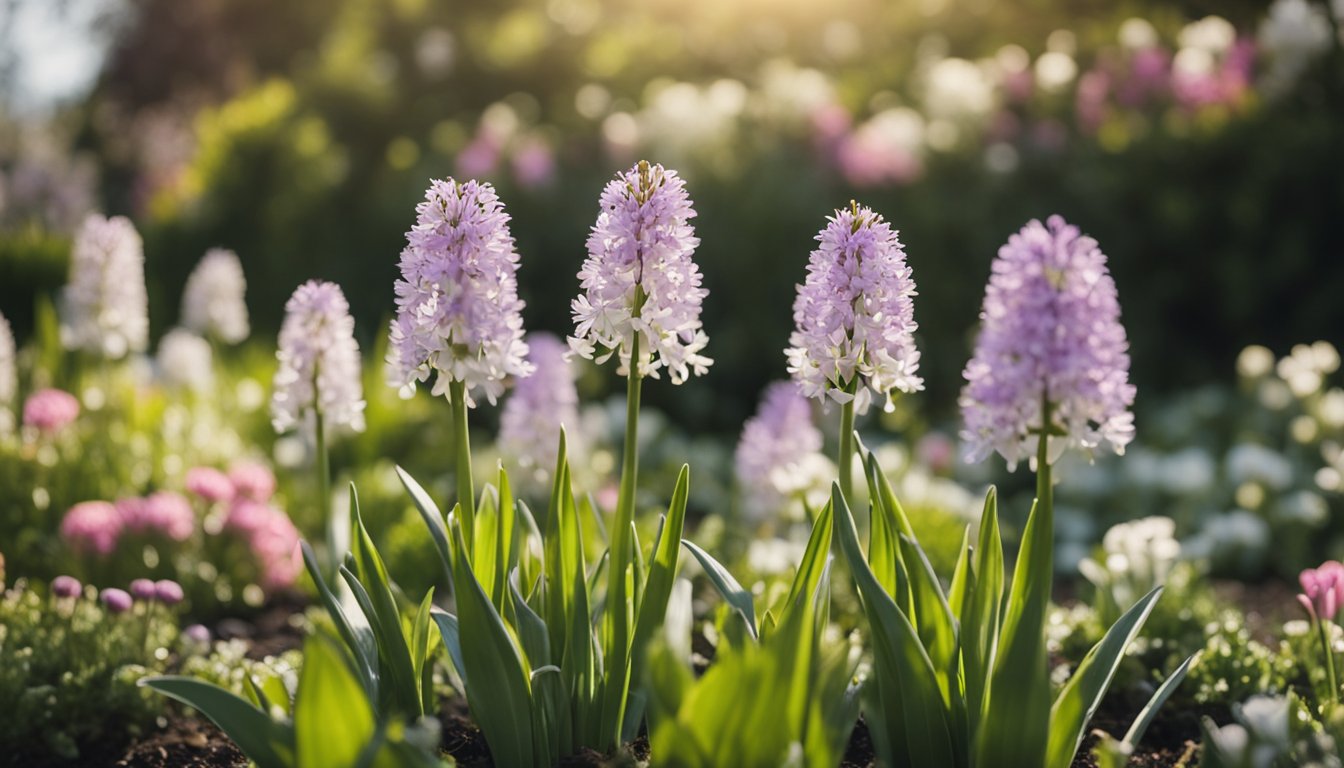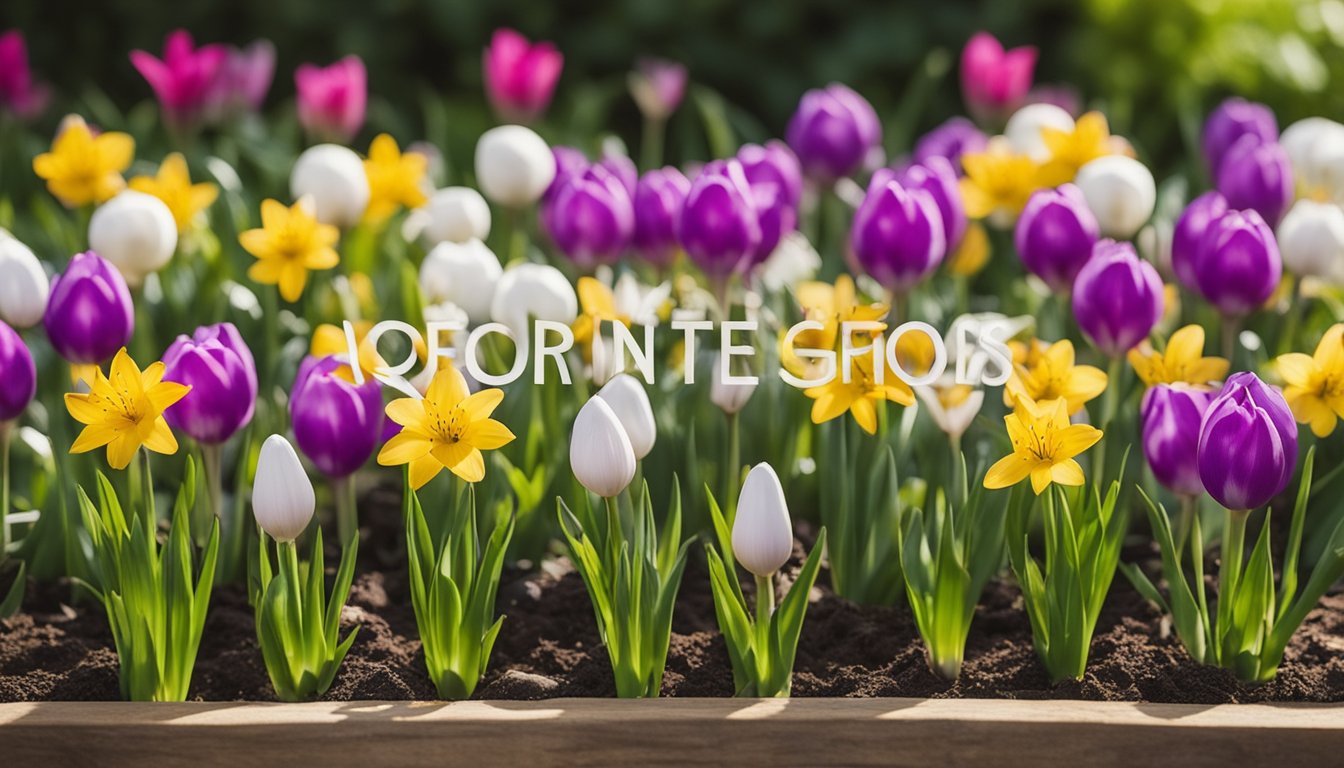Late updated: 17 Jul 2024 15:07
Written by: Emily Thornton
Native UK Bulbs for Spring Gardens: Top Picks for Vibrant Blooms
Native UK bulbs bring vibrant life to our spring gardens, offering a stunning array of flowers that flourish after the winter months. From the delicate snowdrops to the vibrant bluebells, these bulbs are not only beautiful but also play a crucial role in supporting local ecosystems.

Planting native UK bulbs is straightforward. Choosing a well-drained spot with ample sunlight or partial shade, we can ensure these resilient plants thrive. It’s essential to know the right planting time—autumn for dry bulbs and "in the green" for spring planting.
Caring for these bulbs throughout the year involves minimal effort. By planting them in suitable locations like woodland edges or semi-shade, we make sure they receive the conditions they need. This keeps our gardens blooming beautifully year after year.
Key Takeaways
- Plant native UK bulbs in a sunny, well-drained spot for best results.
- Autumn planting for dry bulbs, spring planting "in the green."
- Minimal care needed when placed in suitable garden areas.
Choosing the Right Bulbs for Your Spring Garden

Selecting the perfect bulbs for a spring garden in the UK involves understanding native varieties and knowing the best planting conditions. This helps ensure a stunning display as the season unfolds.
Understanding UK Native Bulbs
We have numerous native spring bulbs in the UK that add vibrant colour to our gardens. Daffodils and snowdrops are popular choices known for their reliable blooms.
Bluebells create dense carpets of blue, while wood anemones and aconites offer a more delicate appeal. These bulbs not only add beauty but also support local wildlife.
Native bulbs are well-adapted to our climate, meaning they are more resilient and likely to thrive with minimal maintenance.
The Best Conditions for Planting
To give our bulbs the best start, we should plant them in well-drained soil, ideally about six weeks before the first frost. A sunny spot is preferred, though many bulbs also tolerate partial shade.
Daffodils and bluebells grow best in rich, moist soil. Alternatively, snowdrops and wood anemones prefer areas that mimic their natural woodland habitat. Proper spacing is crucial to avoid overcrowding, allowing each bulb to naturalise and grow freely.
Taking these steps ensures our spring garden is filled with vibrant, healthy blooms come the warmer months.
Caring for Native Bulbs Throughout the Year

Proper care for native UK bulbs ensures they thrive in your garden while encouraging local wildlife. Tending to these bulbs across different seasons promotes healthy growth and attracts pollinators such as bees, butterflies, and birds.
Seasonal Maintenance Tips
In spring, UK native bulbs like bluebells and snowdrops begin to bloom. It's vital to keep the soil moist and ensure there is adequate sunlight. We should remove weeds to prevent competition for resources. In woodland or meadow settings, bulbs form drifts and require minimal disturbance, although occasional thinning of dense clumps may be necessary to sustain their growth.
Summer care involves monitoring for pests and diseases. Regular checks help in early detection of issues like aphid infestations. During summer's dry spells, a light watering can keep the soil adequately moist, especially for bulbs in pots or containers. Cutting back dead foliage isn't advised until it’s naturally yellowed, as the bulbs use this period to gather energy for the next bloom.
In autumn, it's time to plant new bulbs or relocate existing ones. Native bulbs should be placed in well-draining soil, with the pointed end facing downwards. Regularly inspect the garden for signs of overcrowding and divide clumps as needed. Winter care involves little intervention apart from ensuring the soil remains unfrozen. A light mulch can help protect bulbs from severe frost, especially in exposed gardens.
Encouraging Wildlife with UK Native Bulbs
Native bulbs are excellent for attracting wildlife. By planting species like red columbine (Aquilegia canadensis), we can create a vibrant and nectar-rich habitat for pollinators. These plants bloom from late spring, drawing in hummingbirds, butterflies, and bees. Their vivid flowers and sweet fragrance make them not only beneficial for pollinators but also a colourful addition to our gardens.
When planting native bulbs, consider their arrangement. Planting in drifts or clumps mimics their natural habitat, creating a seamless transition for local wildlife. Bluebells, for instance, thrive in shaded woodlands and add a scented element appreciated by many garden visitors.
Maintaining a diversity of bulbs attracts a variety of wildlife. For instance, bulbs like snowdrops provide early nectar sources, crucial for bees emerging in late winter. Additionally, leaving foliage and flower heads through the season can offer shelter and additional food sources for birds and other creatures, supporting a robust garden ecosystem.
Frequently Asked Questions

Planting native UK bulbs can enhance the aesthetic appeal and ecological balance of your garden. Here, we address some of the most common questions, providing clear and reliable information to help you optimise your spring garden.
What are the best UK native bulbs to plant for a spring garden?
Native UK bulbs such as Bluebells (Hyacinthoides non-scripta), Snowdrops (Galanthus nivalis), and Wild Daffodils (Narcissus pseudonarcissus) are excellent choices for a spring garden. These bulbs are well-suited to the British climate and soil conditions, ensuring a beautiful and resilient display.
How can I find wildflower bulb mixes suitable for British meadows?
To find wildflower bulb mixes, we recommend checking with local garden centres or specialised online retailers. Look for mixes that include native species like Fritillaria meleagris (snake's head fritillary) and Leucojum aestivum (summer snowflake), which are perfect for creating natural, meadow-like settings.
Which bulbs are recommended for shaded garden areas in the UK?
In shaded garden areas, consider planting bulbs such as Wood Anemone (Anemone nemorosa), Wild Garlic (Allium ursinum), and Snowdrops. These bulbs thrive in low-light conditions and can create a lush, woodland garden effect.
When is the optimal time to plant spring bulbs in the UK?
The ideal planting period is in the autumn, approximately six weeks before the first frost. This usually falls between late September and mid-November. Planting during this time allows the bulbs to establish roots and prepare for spring blooming.
Can you suggest bulbs that thrive in a north-facing garden in the UK?
For north-facing gardens, opt for bulbs like Erythronium (dog's tooth violet), Corydalis (pseudofumaria lutea), and Winter Aconite (Eranthis hyemalis). These bulbs are adapted to low sunlight and cooler conditions, making them ideal for north-facing locations.
Are crocus bulbs indigenous to the UK, and suitable for spring gardens?
Crocus bulbs are not indigenous to the UK, but they are nonetheless well-suited for British spring gardens. Species like Crocus tommasinianus and Crocus vernus are popular choices due to their early bloom and adaptability to various garden conditions.
